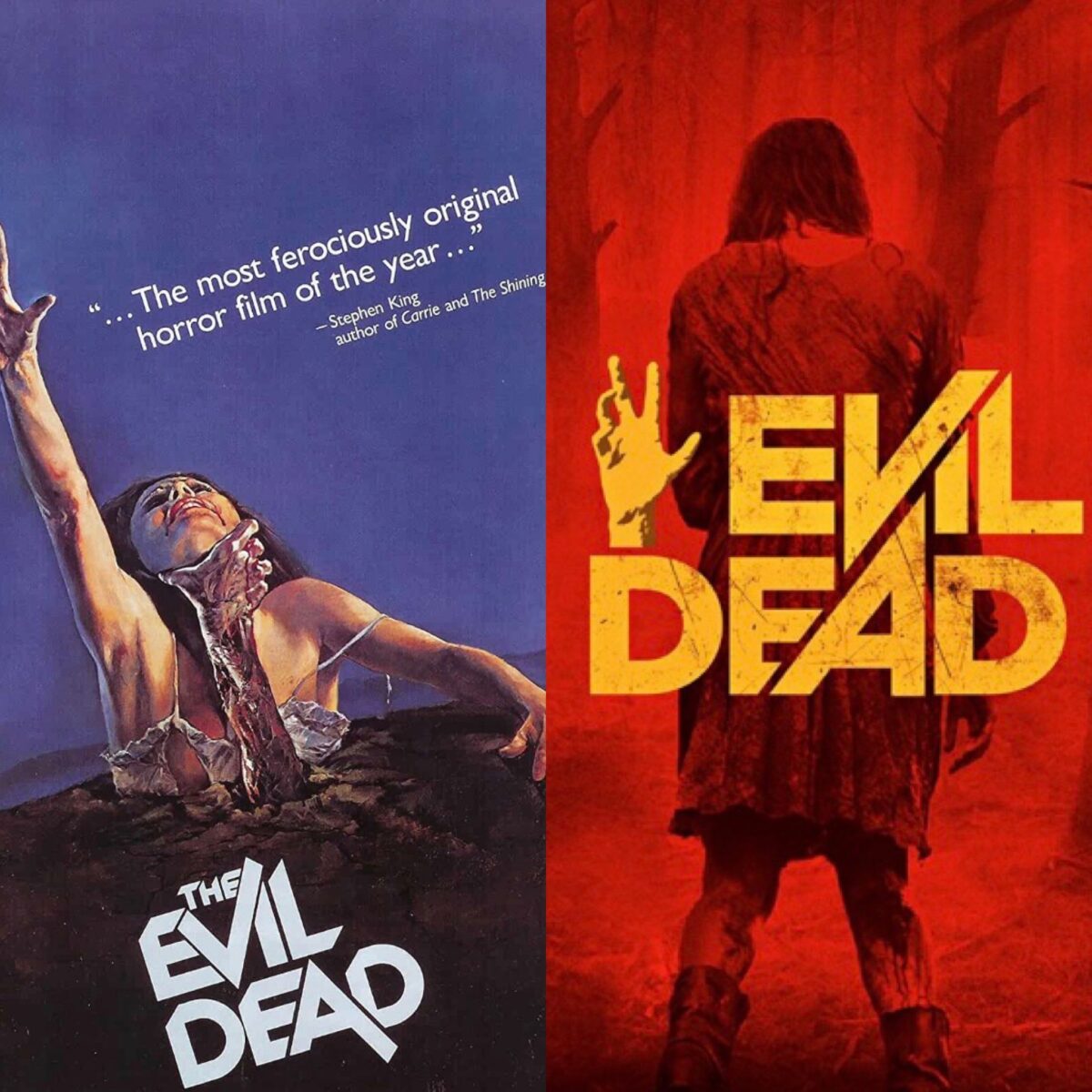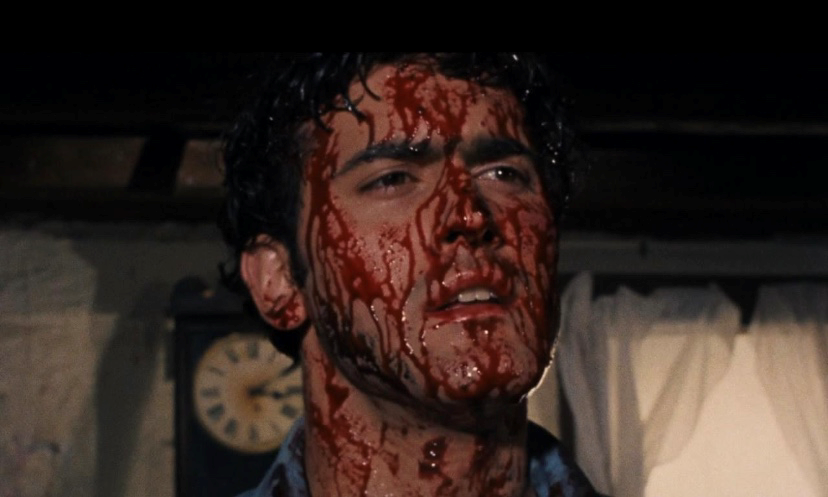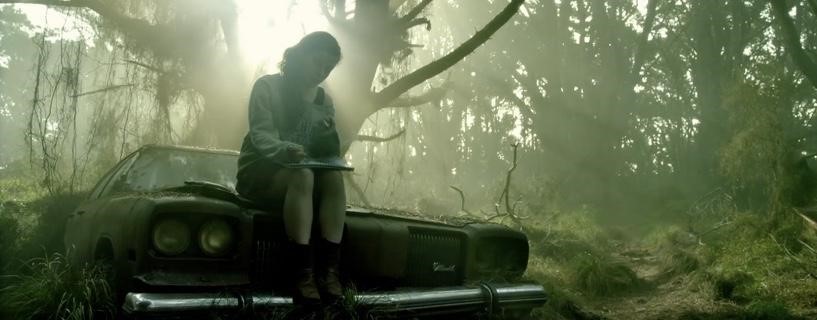
Battle of the Evil’s: Can Evil Dead live up to the originals legacy?
The Evil Dead is inarguably a definitive film of the horror genre, with a long standing reputation for popularising the cabin in the woods trope. Stephen King himself commented that Raimi’s telling of demonic possession was “ferociously original”. The term ‘original’ unfortunately is not commonly used in describing the latest that horror cinema has to offer. Retellings and re-imaginations are terms used to describe the influx of remakes stemming from the last twenty years, with an attempt to reboot a franchise and resell recycled materials.
Remakes can grow sour, not only in their reputation but in their actual quality and potency. Despite this scarceness of originality there are a select few remakes that rise out from the depths of the monotonous barrage of clutter that the remake side of the horror genre has succumbed to.
Fede Alvarez’s 2013 vision of Raimi’s classic prominently succeeds at creating its own success with or without The Evil Dead’s backing. Alvarez’s Evil Dead encapsulates the original’s dark sensibility without Raimi’s lobbying of comically grotesque demonic entities. That being said, to determine what establishes both films as horror classics in their own right we break down each film discussing the overall aesthetics, narrative development, mise-en-scene and direction.
The Evil Dead (Sam Raimi, 1981)

The film centers around Ash (Bruce Campbell), his girlfriend Linda (Betsy Baker), his sister Cheryl (Ellen And their two friends Scott (Richard DeManincor) and Shelley (Theresa Tilly) as they travel to a remote cabin in rural Tennessee. Their trip is shortly met with disaster as evil spirits lure Ash and Scott down into the basement where evil breaks loose.
The Evil Dead is one of the most celebrated horror films of the 1980s with its legacy remaining influential within modern horror. The archetype of the giggling demon toying with its prey, an ancient Book of the Dead bound with hints to not read and the woodside cabin are all common tropes by today’s standards thanks to The Evil Dead.

These horror tropes naturally conjure an appeal that naturally lures in evil, allowing for sinister occurrences to ensue. It is these universal factors that contribute to the films look. The appearance and aesthetics of a horror film can be crucial in determining its effectiveness amongst the audience. The isolated cabin is situated in an enormous spread of open wilderness yet, the confinement and incapability of the situation create a juxtaposed sense of claustrophobia in a vastly unbarred environment.
Alongside this, we have the frightening warning signs that premonate evil happenings prior to the horrific events. When the group arrive they are met with numerous bad omens forewarning danger such as a near miss car accident, a bench swinging on its own and the beginning signs of possession within the first fifteen minutes. This is one of the primary motives as to what makes the original renowned within the genre; it’s the audience participation of witnessing the negative foreshadowings and knowing you’re going to have to sit through their wicked fate. This entertainment factor of engagement with the film is only furthered by Raimi’s revolutionary use of cinematography.
The film begins with an immediate haunting atmosphere catalysed by a discerning POV shot that acts as a continuing motif throughout the remainder of the film. The camera tracks wildly throughout the forest bouncing within the trees and flying over the lakes, placing the viewer within the positioning of paranormal forces. The innovative camera placing continues throughout, with Raimi creating a DIY steadicam due to budgetary constraints. The camera would be carefully bolted down on a plank of wood for two crew members to hold onto either side and navigate under Raimi’s direction. The cheap solution created rich effects, allowing for a shaky depth of field mirroring the uneasy and rambunctious nature of the narrative.

The discerning visuals and tone are only fractious as to what makes The Evil Dead honourable, it’s the film’s fantastically grotesque innards that are iconic. The generous gore and guts is a sensory overload that indulges in the excessively freakish visuals accustomed with eighties splatter films. This is overtly noticeable within the claymation finale, where exploding organs and melting faces are at play for the horror viewers sensationalised needs.
However a scene that steers away from being comical and focuses on pure shock and horror is the infamous tree scene. In what is one of the films most gruesome scenes Cheryl is assaulted by a possessed tree. The phallic tree branches slip around her limbs and restrain her, the result of this being that she too is now possessed. From this moment on the horror that is hinted up until this scene is transformed into a full forced nightmare.

The Evil Dead’s legacy remains entirely influential to this day, with the cabin in the woods aspect now becoming its own sub genre. Alongside this we have Ash who is a horror icon, with the character even having his own spin off TV show ‘Ash vs. Evil Dead’. Ash is a simple yet complex character who possesses the typical level of naivety and charm to make audiences warm to him, but with a dexterity for killing demons. Ash’s appeal, Raimi’s inventive techniques and the overall genre establishing narrative techniques allow for The Evil Dead to cement its cult status position.
The Evil Dead is deeply loved by horror fans, but is not perfect and does delicately suffer from being dated. So does the remake over 3 decades later tackle the faulted aspects and celebrate its finest moments?
Evil Dead (Fede Alvarez, 2013)
Horror remakes can slump onto the scene with the only impact being made occurring financially. With bigger budgets, better CGI and a massive reputation to live up to, the remake can receive rather lacklustre feedback. Whereas Evil Dead is a companion piece to the original that captures the true horror without the comic relief. It’s a viscerally brutal vision that thrives on the nastiness that the original toyed with.

Unlike the eighties, modern horror is saturated with young adults holidaying at a desolate cabin, yet this doesn’t affect Evil Dead as the purpose for the rural stay is not for a nonsensical reason but for an actual source of isolation. The premise of the film is nearly the same as the original with five young adults (with two being siblings) staying at a cabin where evil entities are awakened due to the group’s own curiosity.
However the female lead Mia (Jane Levy) has a crippling heroin addiction, meaning that the secluded stay is necessary to allow for an intervention and addiction withdrawal. Immediately the sensibility of struggle is lunged onto the characters allowing for the audience to somewhat connect and understand the protagonists rather than disavowal them as dispensable characters.

Evil Dead has a reputation as being one of the better remakes due to its sense of logic that the original lacks. In The Evil Dead there is little reason as to why these demons are here or even what their motives are besides killing, there is no sourced route of chaos or evil. What Alvarez succeeds in is not creating a meaning behind the demons but to position the characters in a more realistic light in such a situation.
Despite Ash’s survival skills there is a sense of misunderstanding and damping down in how serious Cheryl’s and Shelley’s possession is. Yes, the first film has satirical undertones, but there is no sense of emergency or rapidness, ultimately decreasing tension. Alternatively Alvarez sticks to the horror route with an excess of panic and dread accentuated throughout.

The grossly outrageous gore is gloriously exhibited in a grand fashion brimmed with squirish moments including amputation via carving knife, tongue splitting and scalding. The bloodshed is generous but not entirely unnecessary. The ultraviolence is a grim payoff, with the stimulating body horror encapsulating how different the original and remake are.
The final sequence of Raimi’s film is over the top gory yet humorous, instead Evil Dead offers no relief or break from pure carnage. To further the horrific imagery is the perfect pace of the film. As aforementioned within the first fifteen minutes of the original film demonic action has already presented itself. Evil Dead does not crawl along but it handles the quick pacing more effectively. E.g, within the same amount of time we are introduced to reputable characters as well as attain a creepy atmosphere, with the horrifying opening sequence establishing Alvarez’s motives as to what sort of film we are about to endure.

Another commemorable aspect within Evil Dead is its use of practical effects. CGI almost acts as its own characters in many modern films, the constant display of unrealistic gore due to heavily digitally altered scenes can lessen the affective qualities. To defy this Álvarez opted for makeup, illusions and practical effects to achieve a grueling visceral appearance for necessary scenes. The practical effects is not the only reference to the original, with slight homages being paid throughout; a broken necklace is found outside resting resembling a skull, similar to Ash finding a chain for it to only fall into the shape of a skull. Other subtle references to the Evil Dead franchise include Mia wielding a chainsaw and possessed hands capable of mutilation.
Evil Dead understands its position within the Dead series. It’s not a retelling, it’s a chapter in the Book of the Dead, it fleshes out more than the first without over shadowing its predecessor. Raimi focuses on youthful individuals tackling crazed demons whereas Alvarez eludes this same aspect but with a grungy tone harboured with a kinetic brutality that explores hellish grounds.
This weeks article comes via Grace from Film Overload, you can check out more of her work here.

